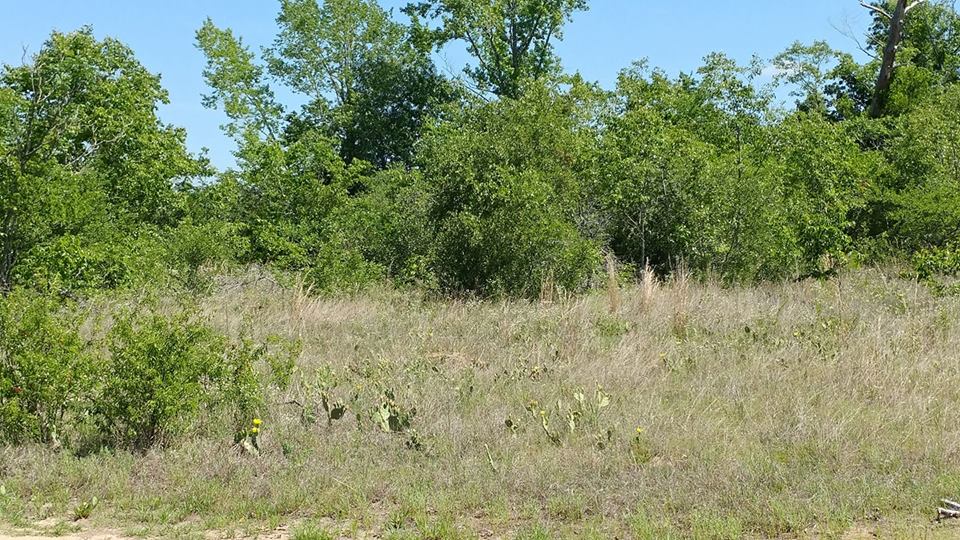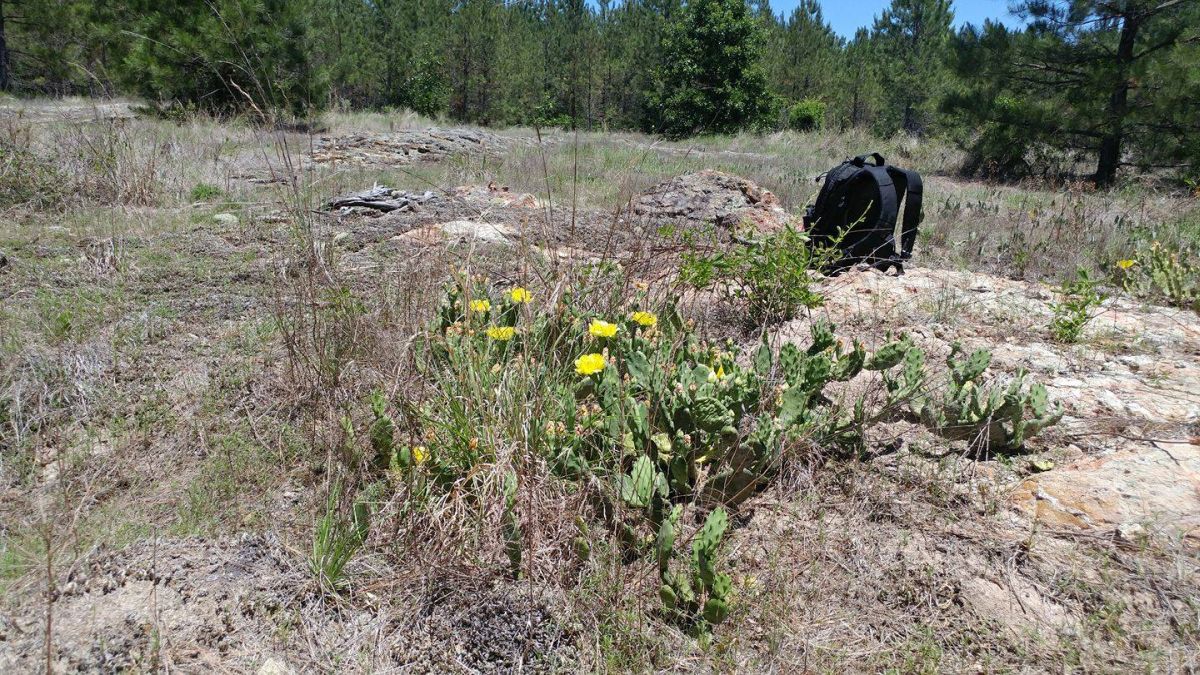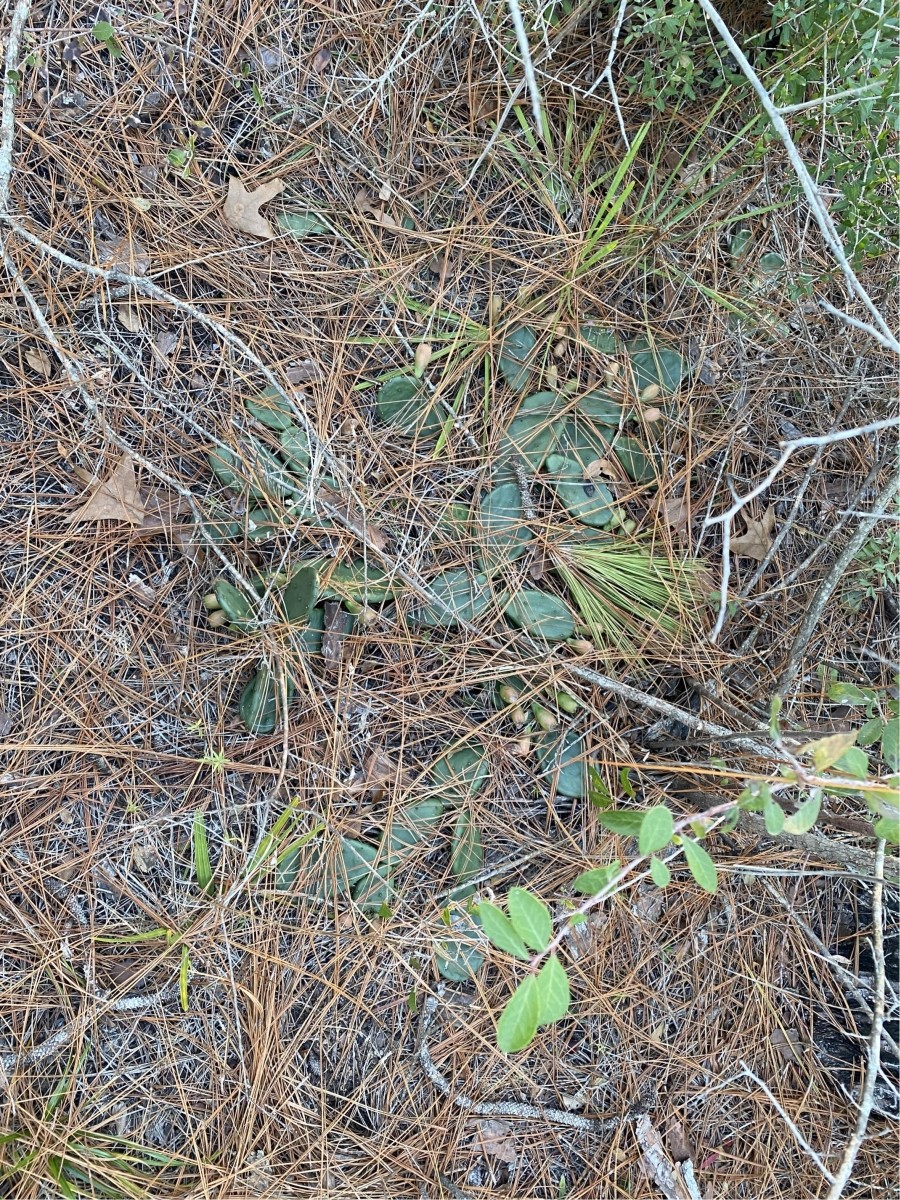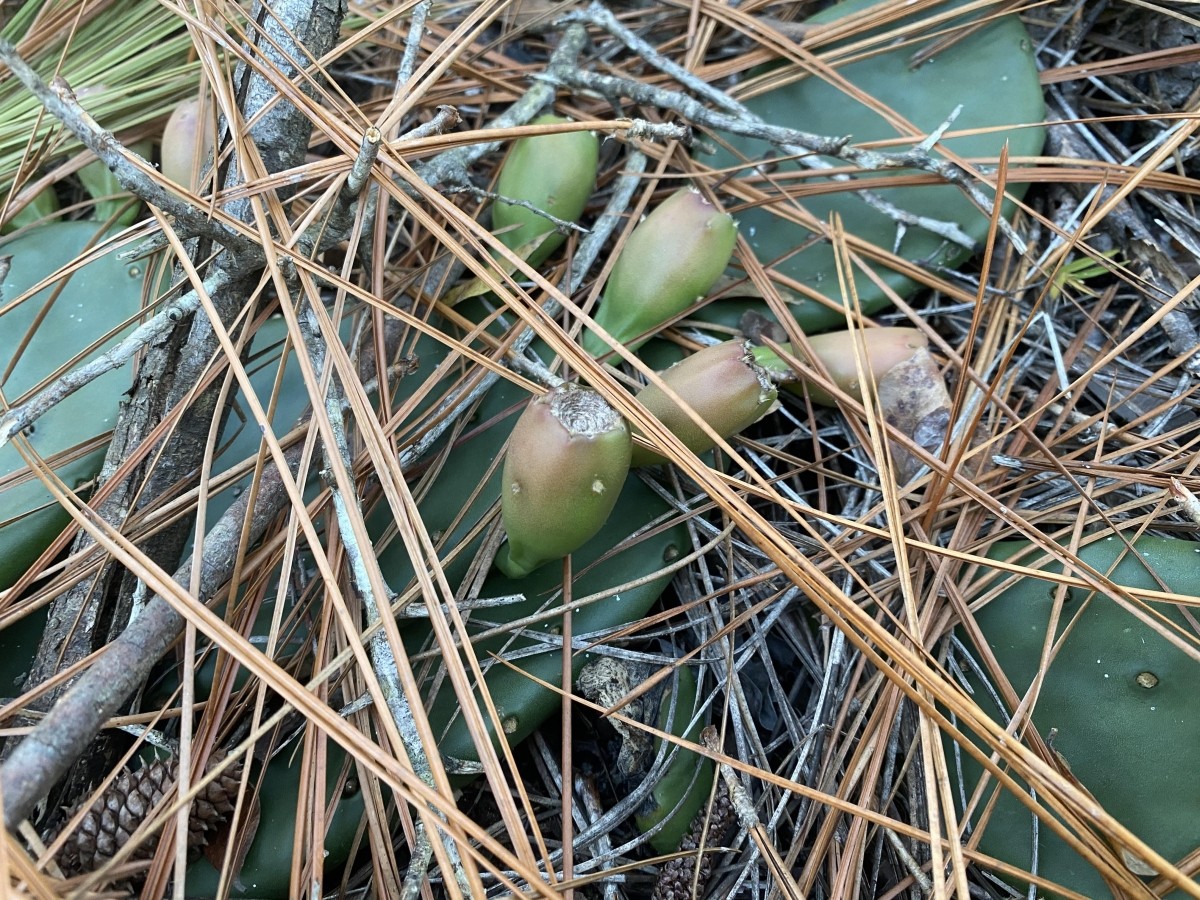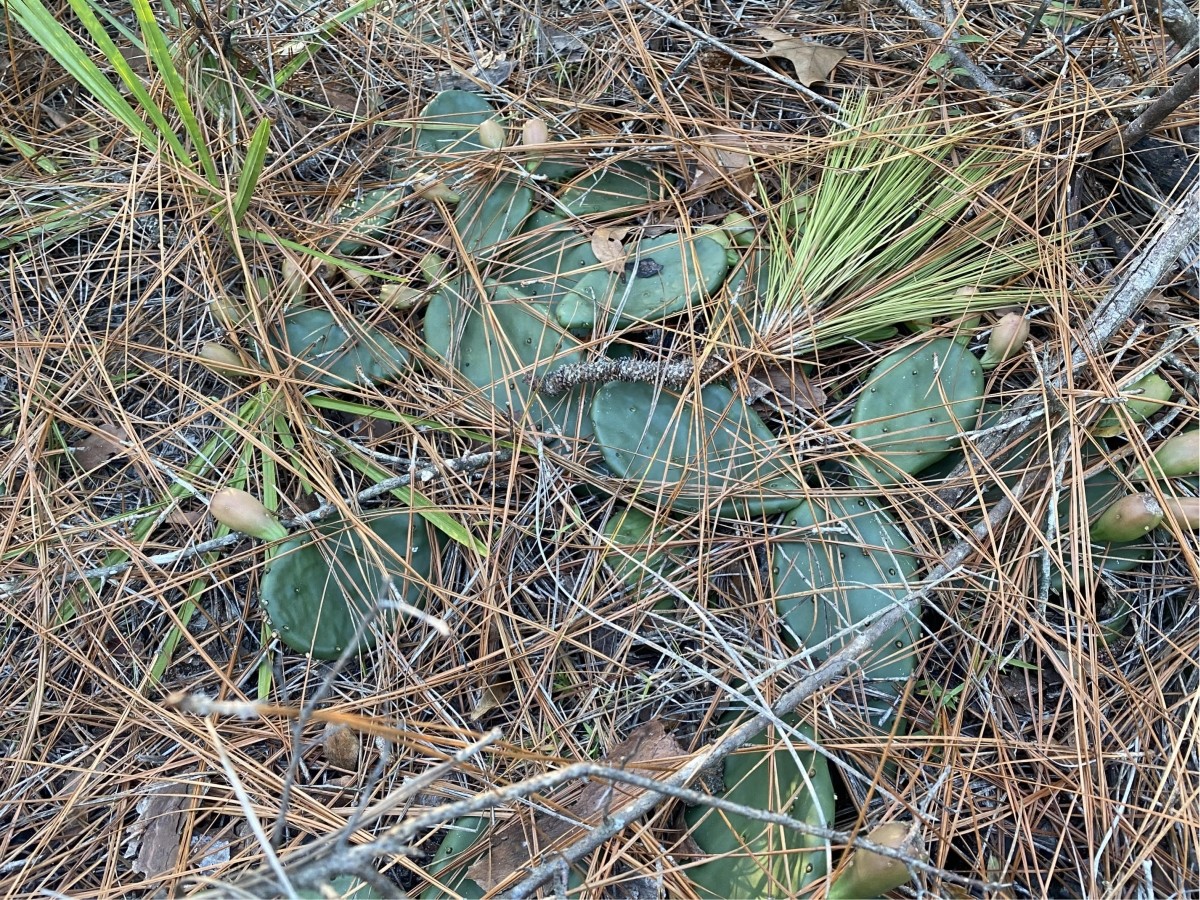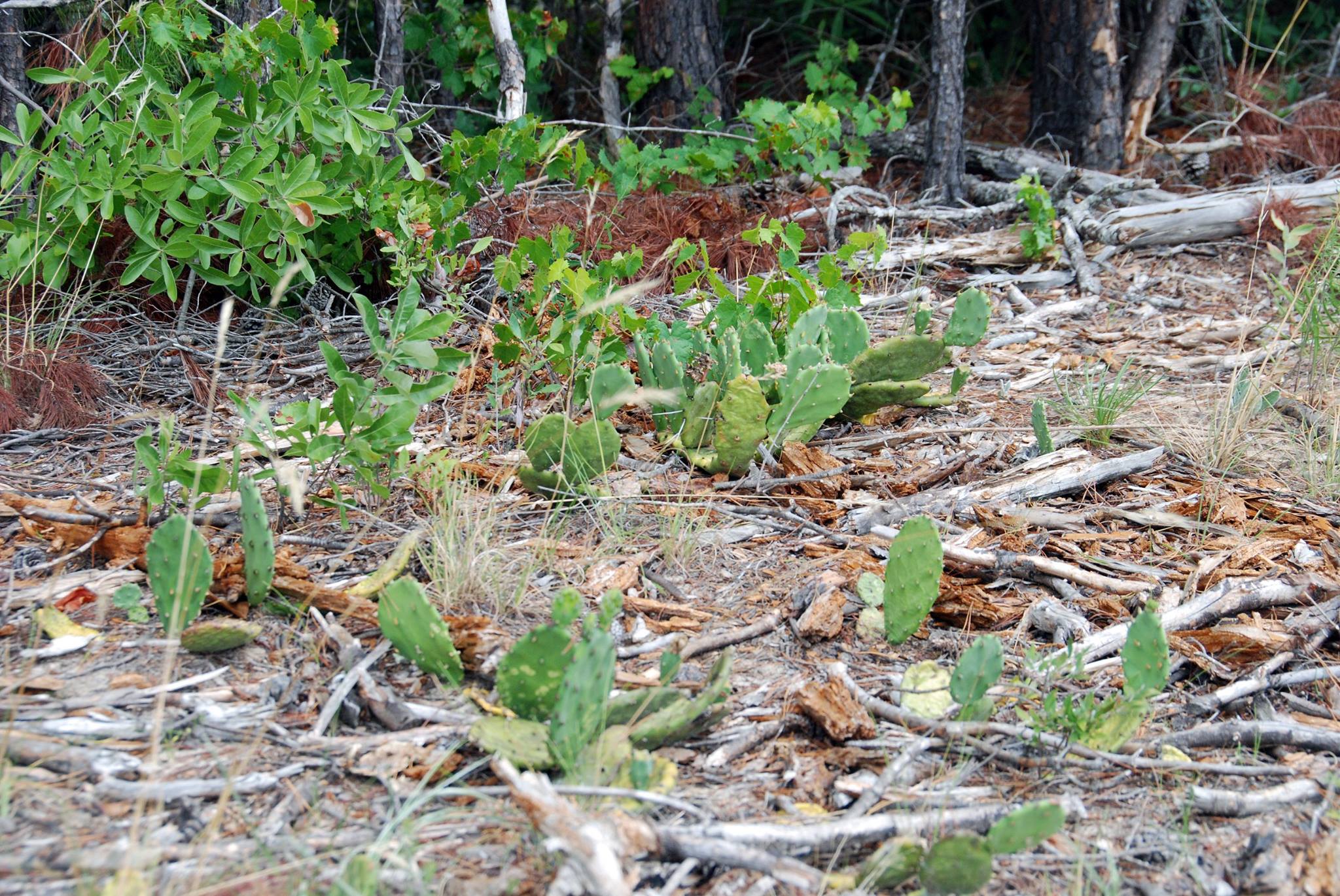
Small, Journal of the New York Botanical Garden 20: 26, 1919
(Also Opuntia mesacantha Raf ssp. lata [Small] Majure, Phytotaxa 290, 1: 1–65)
Herbarium; Herbarium; Herbarium; Herbarium; Herbarium; Herbarium; Herbarium
See O. cespitosa See O. humifusa See O. mesacantha
Original Description
What is Opuntia lata?
Opuntia lata is a prickly pear cactus known from central Georgia to northern Florida and west to central Mississippi, where it occurs in grassy areas and other openings in pinelands, often in sandy soils. It is similar to O. mesacantha and O. humifusa.
See Majure et al., 2017.
Details
O. lata forms a prostrate prickly pear that may branch in all directions forming irregular mats up to 1 m across. Although prostrate, the last cladode on a branch may tend upwards. In the growing season, plants may be partially upright with turgid growth. Cladodes are elliptical or sometimes narrowly obovate or obovate, up to 4-15 cm long, and deep green. They are often lightly scalloped in outline. Spines may be in the margins only where there are 1-2 per areole. Spines are delicate (0.7-0.9 mm in diameter).
Flowers are yellow, 7-9 cm wide, and there are many petals. The stigma is white. The fruit is clavate and many-seeded. Seeds are about 5 mm in diameter.
O. lata is diploid.
Other Notes
The type specimen was collected near Gainesville, FL. A taxonomic position as a subspecies of O. mescacantha was proposed (Opuntia mesacantha Raf ssp. lata [Small] Majure).
O. lata is similar to O. mesacantha upon visual examination; the two can be difficult to distinguish on gross observation. However, the latter is tetraploid. Adanick et al., 2020, developed a method to measure stomates (size and distance from each other) in the field to differentiate the two taxa.

